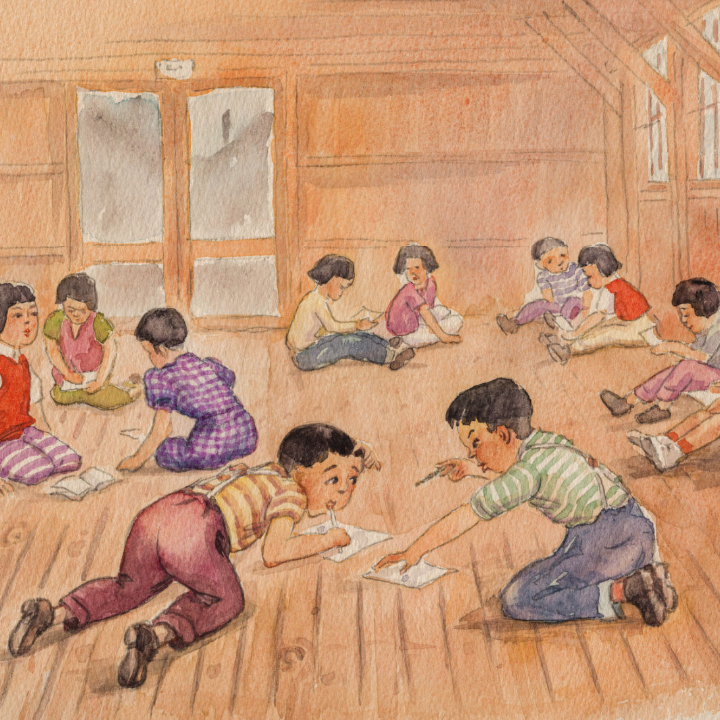Kango Takamura – an uncollected graphic novel
For the past few years, I have been volunteering at Manzanar National Historic Site with my family. We usually stay in the town of Independence, which has an incredible little museum, The Eastern California Museum.

When I was there in May, I was taken by the watercolors made by Kango Takamura. He was incarcerated at Manzanar and made watercolors that depicted the administrative life of the camp, especially the school and orphanage. We don’t often see color images of Manzanar and the softness of the colors in Takamura’s paintings contrast with the harshness of the conditions.

I was also intrigued, of course, because of my interest in Miné Okubo’s Citizen 13660. Kango Takamura’s images reminded me of Okubo’s. Both artists were capturing the life of the camps and both have a way of capturing telling expressions.

Takamura never collected his paintings into a book (as far as I am aware). So we don’t have a proto-graphic novel like we do with Citizen 13660. Yet, the images taken together do make a story, if not a linear narrative. We see the struggle to get a school going at Manzanar and the conditions under which the students had to learn. We also see depictions of the Children’s Village, the only orphanage at any of the camps.

Once I got home and did more research, I found out that Takamura had been at other camps. He was first detained in Santa Fe, New Mexico and, as it turns out, made watercolors there as well. Many of these paintings can be found on the internet (see below).
Amazingly, Densho (an incredible site and resource) has a page on Kango Takamura that puts his paintings in order. The page doesn’t contain all the watercolors, but by being put in chronological order, the images that the page does provide give us the story of Takamura’s experience. And so, in a way, we have an online graphic novel by Kango Takamura.
So we have two verbal/visual accounts of life in the camps during World War 2, Citizen 13660 and the watercolors of Kango Takamura. This attests to the power of sequential narrative to give voice to those who have been told that they have no right to a voice.
UCLA has a collection of Kango Takamura’s works.
The Japanese National Museum also has a Kango Takamura collection.
You can see collections of images that The Eastern California Museum has here.


